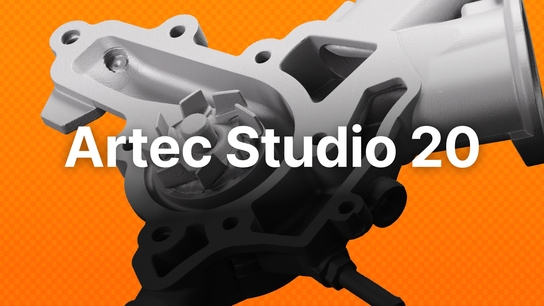Main masterpiece of metallurgical exhibition
Metallurgy. Litmash 2012, the industrial international exhibition devoted to metallurgy, has just ended at Moscow’s Expocenter. And although the company Artec did not officially take part, its 3D scanners shone at several display stands. To begin with, everyone could see demonstrations of the scanners at the stand of Artec’s authorized re-seller in Russia, Delcam-Ural. But visitors also had the opportunity to see actual applications of the scanners in real life. For example, the Yekaterinburg company, Ingetech, adorned its stand with a statute of a diver swimming in sand, created using the scanner Artec L. 
According to Ingetech’s project manager Roman Kudrin, who was the model for the statue, the idea of casting a swimmer occurred to them even before the Litmash 2011 exhibition. Moreover, a number of factors influenced the unusual choice of a swimmer as the theme for a sculpture by the metallurgical company, starting with the fact that Roman himself was a swimmer in his youth, and the overall absurdity of the idea of a person swimming in sand. Even the sandbox is not coincidental here, as Ingetech was exhibiting together with its partner from Nizhny Tagil, Uralchimplast, which supplies the binding elements of the mold, symbolized by the sand.
Last year Ingetech turned to Artec’s official re-seller, Delcam-Ural, with this idea. They were to scan Roman and make a 3D model of him, from which they planned to cast the statue itself. Delcam-Ural tried to do the job using the Artec MH scanner, which is best suited for smaller objects. As a result, the scan contained a lot of “noise”, which the company specialists were unable to clean up in time.

This year Ingetech staff turned to Artec directly. Mindful of the mistakes of the past year, this time it was decided to use the Artec L scanner, with which it is much simpler and faster to scan a full-grown person. The scanning itself took only a few minutes, followed by about two hours of post-processing. As a result they obtained a model which could be used to create the statue. The model was then exported to the program PowerMill, and then finally sent to the Numerical Control stand (CNC), which created the cast over the course of two weeks.
The director of Ingetech described the resulting creation thus: “This is, in fact, a work of art, but a 21st century work of art. Why do we value works of art? Because true geniuses, through a brush, a sculpture, the fine motor skills of their fingers, express their talents as geniuses. So in this case, it is the fine motor skills of the human brain, engineering ideas, that allow the realization of the idea through a computer, through a CNC, through a scanner, and the obtaining of a product on a level of quality different from that of any sculpture.”




